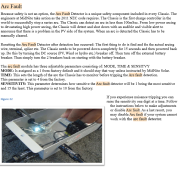FilterGuy
Solar Engineering Consultant - EG4 and Consumers
As I was reading the rapid shutdown requirement in the 2020 NEC, this jumped out at me:
If I am reading it correctly, I think the first part essentially says that the wiring has to be in conduit.
I am having a hard time parsing the second part. If you ground the PV Array frames.... how do you meet the requirement to be "installed more than 2.5m (8 ft) from exposed grounded conductive parts or ground."
690.12(B)(2)(3):
PV arrays shall have no exposed wiring methods or conductive parts and be installed more than 2.5m (8 ft) from exposed grounded conductive parts or ground.
If I am reading it correctly, I think the first part essentially says that the wiring has to be in conduit.
I am having a hard time parsing the second part. If you ground the PV Array frames.... how do you meet the requirement to be "installed more than 2.5m (8 ft) from exposed grounded conductive parts or ground."










